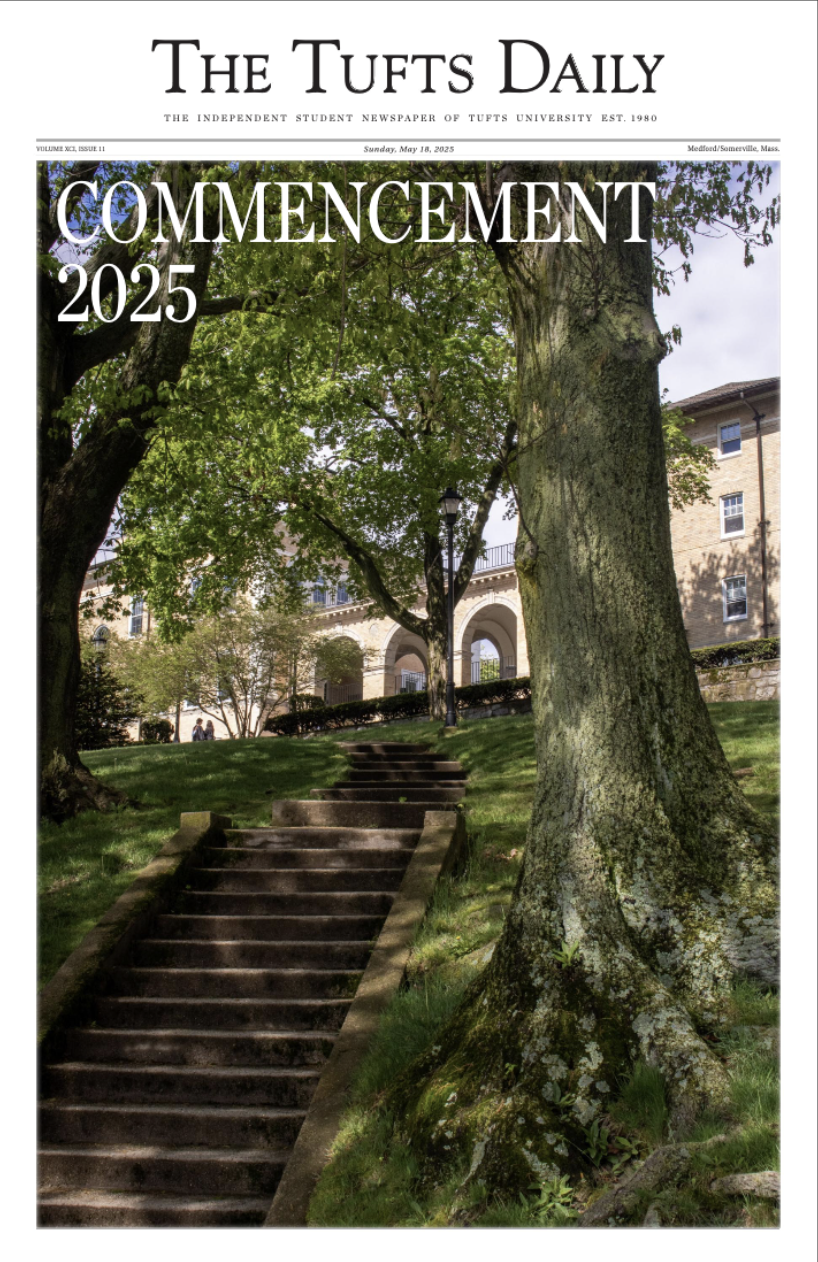I’m willing to bet that most Tufts students have had at least some type of interaction with the Tufts Community Union Senate Treasury — whether that be for a personal reimbursement, navigating the club funding process or even passing by the Treasury’s corner office situated at the top of the Mayer Campus Center. Regardless of the number of times you may have heard of the Treasury in passing, many students still don’t fully understand how they operate behind the scenes.
Dhruv Sampat, a junior majoring in political science and economics, is the chief executive of the Student Activities Fund. This fund is estimated to be over $2.7 million; it is supplied by a combination of the surplus maintained from previous years and the yearly student activities fee, which was $396 for the 2024–25 school year.
Sampat said they would like to budget around $3 million for clubs and $300,000–400,000 for supplementary funding for the 2025–26 school year.
In his role, Sampat chairs both the Treasury and the Allocations Board while also maintaining their relationship with TCU. He explains that the Allocations Board is tasked with the allocation of funds while the Treasury oversees the use of those same funds. TCU has a vote in both groups’ decisions.
The Treasury is composed of two assistant treasurers, two associate treasurers and the head treasurer, Sampat.
All members of the Treasury are also on the Allocations Board, along with representatives from the Senate. Each member of the board is assigned a council where they are in charge of equitably distributing funds for all student organizations under their council purview.
But what do the main responsibilities of these groups actually look like?
Enter student organizations. Every spring, clubs submit their forecasted budgets for the next academic year to the Treasury for approval. Each student organization is grouped into one of the 10 councils, which have themes spanning from cultural to pre-professional/academic to miscellaneous, which includes clubs like the Coin and Currency Club Collective and Quadball.
When clubs submit their budget to their council, the appointed Allocations Board member will work with the group to negotiate the budget, which is then voted on by the board. Once a budget is approved, the club is set to start spending in the following school year. Certain club members can either apply to use the school’s credit card for purchases or opt to be reimbursed through the Treasury.
The budgets are kept in a spreadsheet managed by the Treasury. The team holds an impressive 20 office hours per week to help student organizations navigate the reimbursement process and answer any financial-related questions. If clubs request for spending outside of their budget, their requests defer to the Allocations Board, which also controls any supplementary funding.
For clubs looking to become TCU-recognized, the TCU Judiciary is in charge of approving them. Once a club is approved, it begins to work with the Treasury. For clubs recognized mid-year, a $3,000 restriction is usually placed on their budgets, which Sampat must approve. If they require more funding, they must go through the Allocations Board and the TCU Senate.
Brendan French, a sophomore, is both an associate treasurer and the head of Council 1, the cultural clubs.
“[When] looking at their proposed budgets for next school year, [I make] sure they align with the [Treasury Procedures Manual], and then also making sure we're not overspending, because we do have council caps,” French said.
French also uses past and current budgets, participation trends and mission statements in his decisions. During the school year, clubs are able to reallocate their money. The only restriction is that money allocated for non-food items cannot be transferred to food and vice versa.
He explained that for the allocation of funds within a budget, there are standard maximums that clubs can use for food. For cultural and religious clubs, it’s 60%. All others are usually held to a 30% maximum.
“The main purpose of events shouldn’t really be for the food; it should be for students to do activities, bond with each other — maybe to fulfill their career goals or something like that,” French said. “For culture clubs, we definitely allow them to be able to spend more of their money on food, just because food is so essential to culture.”
Sampat agreed but has taken a more lenient approach to food budget reallocations. He underlines his own consideration for clubs and how this rule could pose a barrier for some events.
“Generally, what I’ve learned in the last three years is that it’s very difficult to just impose a 30% or a 60% rule like that, and I think it’s unfair on clubs sometimes,” Sampat said. “So we still have that rule that’s in the [Treasury Procedures Manual], but I’m flexible with it.”
For clubs requesting supplementary funding, French works with them to present their case to the Allocations Board.
“If [the board] has made a change or a different recommendation than what the club has requested, then I explain why [Allocations Board] has made those recommendations in terms of giving a club more money or less money,” French said.
For clubs that grossly overspend without approval, the amount could be taken out of their budget for the next academic year. A reevaluation of the club signatories, those that can sign off on reimbursements and any other treasury forms, will also be made.
As far as changes within the past year, French explained that the university has directed the Treasury to cut down the amount of money spent on prizes.
“I think it started this year, but now we’re not allowing gifts anymore, unless it’s for maybe a speaker who’s coming in to talk to members within a club here on campus,” French said. “Giving out prizes and gifts, from what I’ve heard, can just be a little bit of a problem in terms of when the school is filing its tax returns because it’s not really in code with the rules and regulations for institutions.”
Naisha Luthra is an assistant treasurer. She budgets Council 6, the miscellaneous council. Luthra is a first-year, so this is her first budget season with the Treasury.
“The biggest justification I look for when clubs ask for an increased budget is: Do you have more members? Are your members more engaged? Do you want to do more programming?” Luthra said. “We obviously help each other and talk through things and take advice and tips, especially for people that have done this before, but at the end of the day, it’s how you want to approach it and go about that process.”
Her council includes clubs like the Tufts Cheese Club, where most of the budget is for food.
“I think my council is one of the hardest to standardize … it’s mostly based on what they’ve been doing in previous years, how that’s been going,” Luthra said.
“I think a massive misconception is that our purpose is to cut down people’s budgets and not give them money, especially with [the board]. I don’t think that’s true,” Luthra said. “We just want to make sure that money is being given out fairly and oftentimes, that comes across as we’re trying to cut budgets down.”
As for the day-to-day operations, Luthra explained that her time in the office and working on administrative tasks align with her future career goals, so it has been beneficial to have this experience.
While the Treasury is a complex organization with multiple moving parts, French nicely sums up the role of the group on campus.
“The goal of the TCU Treasury is to help clubs in figuring out how much money they need for events … how to go about executing and planning their events financially … and to ensure that students are able to express themselves and do the activities they want to do in college because college … is also about exploring your interests, doing your hobbies [and] doing what you love to do,” French said.






